
10 Remote Work & Travel Tips To Get You Started TODAY
Let’s unpack the remote work and travel lifestyle. As two girls who work entirely from our laptops and travel the world, we’ve learned a thing or two – through trial and error – about how to make money while traveling. In this blog post, we’ll share 10 valuable tips to help you kickstart your remote work and travel journey as a digital nomad.
From finding remote job opportunities, to staying in coliving homes, to leveraging time zones, we’re going to equip you with the tools you need to make travel a part of your lifestyle.

Outsite coliving house in Oahu, Hawaii

Outsite coliving house in Oahu, Hawaii
Heads up: Links in this post are affiliate links. This means that if you click the link and make a purchase, we receive an affiliate commission at no extra cost to you. Your support helps us continue to travel the world and share our experiences, and for that we are forever grateful!
Table of Contents
1. Slow Travel
Slow travel is one of the fastest growing trends in travel right now, and for good reason. Essentially, slow travel is just what it sounds like: taking longer trips that allow you to connect more deeply to a place and its people. Here are a few reasons to consider slow travel as a remote worker:
Slow travel can save you money
Booking sites like Outsite and VRBO homes often give discounts for extended stays (30+ days) that allow you to save big on your slow travel trips.
Slow travel is more eco-friendly
Transportation is one of the largest culprits of carbon emissions. Choosing one destination rather than trying to make it to 3 or 4 in the same amount of time, guarantees you’ll minimize your carbon footprint as a traveler.
Slow travel helps you avoid burnout
Choosing to travel more slowly gives you time to adjust to new time zones and get settled into your accommodation. Plus, you’ll be more likely to form lasting friendships with the people you meet, as you’ll have more than a few days to get to know each other.
Slow travel gives you a more authentic experience
Slow travel is a perfect match for remote workers, because it gives you the time to you need to experience a new destination. When you work while traveling, you don’t have as many hours in the day to explore and engage with the community you’re visiting. For this reason, it makes sense to spend more time in one place.
For more sustainable travel tips: 5 Eco Airlines Worth Flying

Remote working in San Pedro, Belize

Flying into Belize
2. Coliving Houses
Once you know what type of trip you want to have, it’s time to decide where to stay. Many travel companies are beginning to cater to digital nomads specifically, with the creation of coliving houses. Outsite is our favorite company for coliving homes.
With over 50 homes across the globe, this company is fostering a global community of travelers and encouraging you to bring your work with you.
Why we love Outsite
This company provides workspaces and fast wifi in all of their homes. Plus, you get your own room and bathroom. Coliving houses have the community benefits of a hostel, with the privacy of a hotel. If you’re a digital nomad, we highly recommend checking out Outsite for an upcoming trip.

Outsite home in Oahu, Hawaii
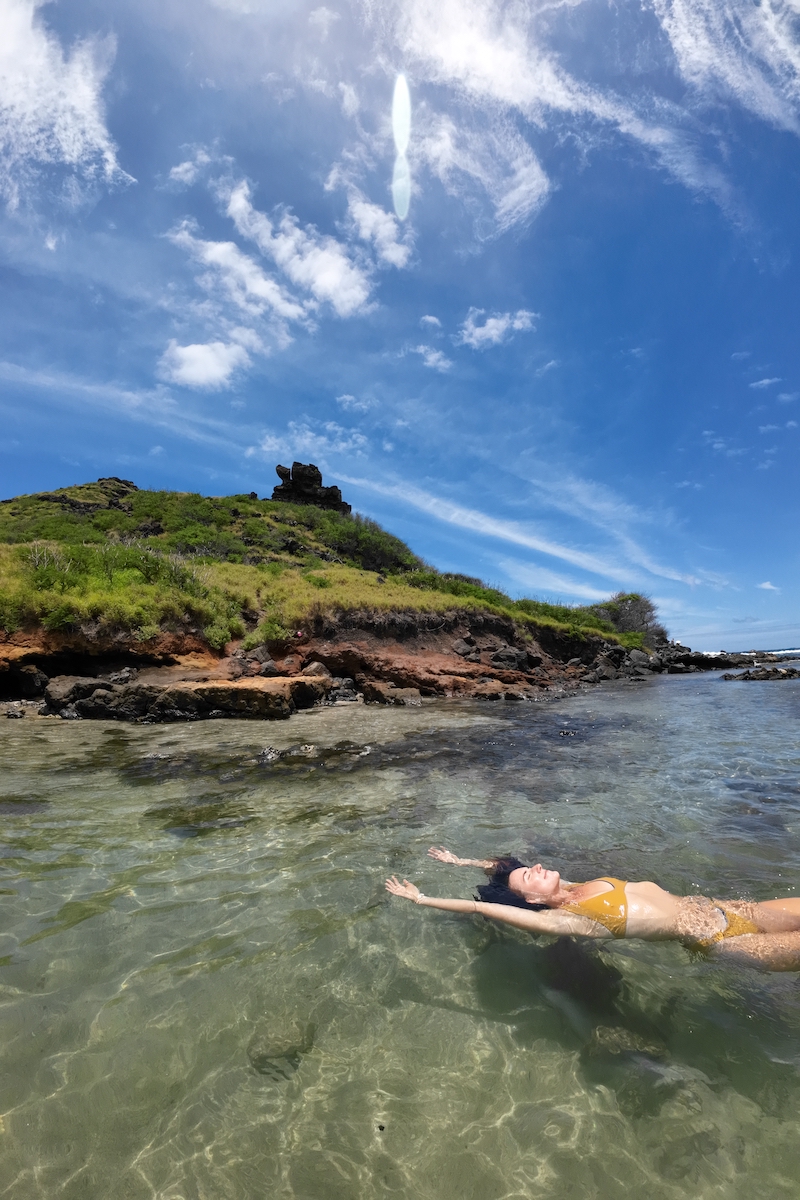
Oahu, Hawaii, USA
3. Coworking Spaces
If you don’t stay in a coliving house, consider renting a coworking space during your travels. Coworking spaces are shared working environments that will give you the office space you desire during your extended stay.
WeWork is one of the most popular coworking companies, but new brands are continuing to emerge. Selina is another popular travel brand that has gorgeous coworking spaces. This company also operates hostels and cafes, and is known for hosting community events.
Difference between a coliving space and a coworking space
Coliving spaces include accommodation with communal living (and some, like Outsite, also include work spaces!). On the other hand, Coworking spaces are offices designed for freelancers and remote workers to work and connect with one another.
Most coworking facilities will have flexible membership options, including daily, weekly, and monthly plans – so that you only pay for what you need. A clean space that includes desks, chairs, and high speed wifi will help keep you focused and inspired while traveling. This is one of the best ways to avoid poor wifi connections and the difficulties of taking work calls in busy places like coffee shops.

Outsite in Oahu, Hawaii
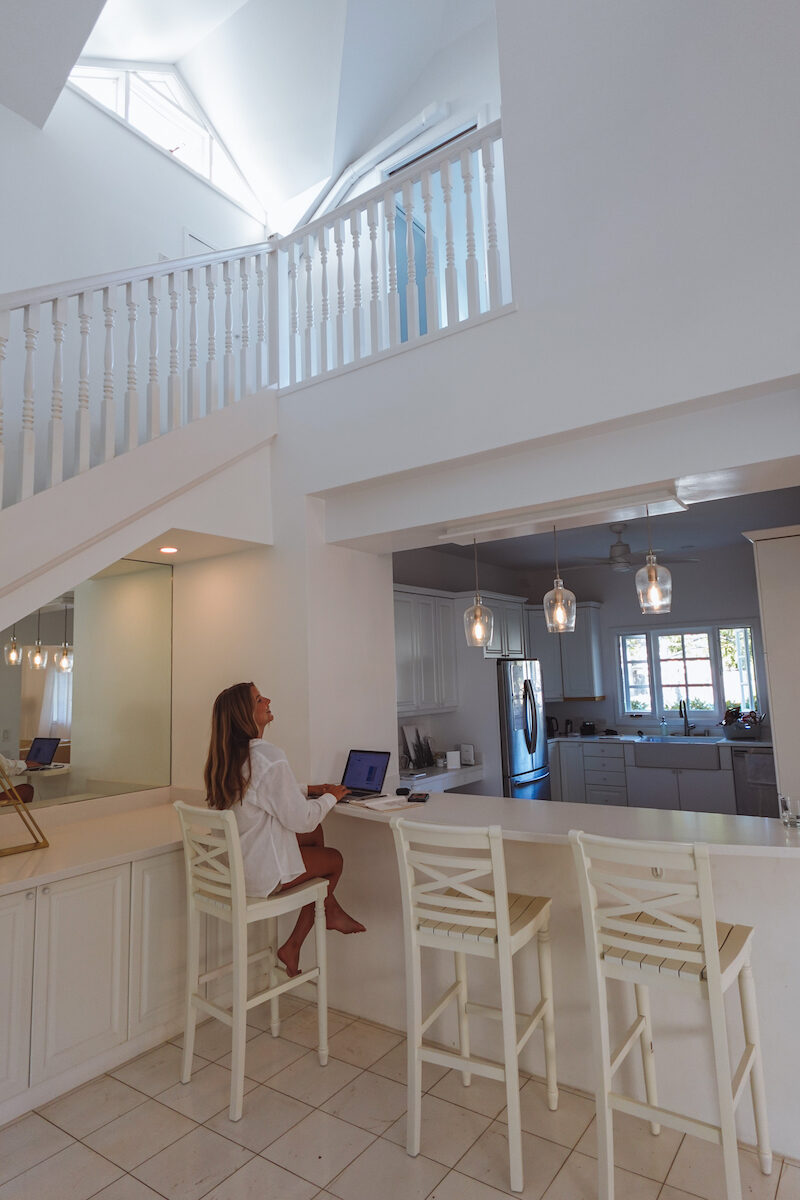
Coworking space in Hawaii
4. Solid WiFi Connection
As a digital nomad, it’s your responsibility to make sure you have a stable WiFi connection no matter where you are. But don’t let the fear of a spotty connection keep you from living this lifestyle! Thankfully, there are ways to safeguard yourself before you travel so that you can be confident in your connection.
Our #1 tip is to purchase your own personal hotspot, so that you can stay connected wherever you are. You can purchase a personal hotspot device from GlocalMe, which allows you to connect and buy data as you need it.
We use the G4 Pro Portable Wifi Device, a touchscreen device that comes with enough free data to get you started. You can use our code for 15% off all GlocalMe products. In addition to GlocalMe, we also have personal hotspots on our phones through our service provider.
For more travel essentials: 10 Travel Themed Gifts For Travel Lovers | 2022

@baggagegirls TIPS FOR REMOTE WORK & TRAVEL 💻✈️ Back with another video as @Bailey & I drive to the west side of the island instead of the north shore for once ⛰️🌺 This time we’re talking about remote work and travel. We’ve both spent our first year post grad working remotely and traveling to new places. A few of our best tips: 🧳 slow travel 🏡 try a co-working house ⏰pay attention to time zones when deciding where to travel 💻 have a portable hotspot 🛜 check the wifi quality of your accommodation before you book ••• #workandtravel #remotework #digitalnomadlife #traveltips #travelgirls #baggagegirls #travelinyour20s #hawaiitravelvlog
♬ Circles - Instrumental - Post Malone
5. How to Find a Remote Job
When it comes to finding a remote job, we can tell you to search for jobs on popular sites like LinkedIn. But chances are, you already know this. So instead, we want to share a few of our personal tips and tricks.
Keep a Running List
One of our favorite tips for finding a remote job starts with believing you’re deserving of working for your dream companies. Start by envisioning the type of company you want to work for. Next, create a list of companies in existence that align with your own goals and values. Once you have this list (we recommend including 10-50 companies), go directly to the Careers pages of the company websites to check job postings regularly. This way, you’ll be the first to know when new jobs are posted and you can apply directly, rather than finding the posting on LinkedIn weeks after it has gone up.
Creatively
Creatively is the job platform for creatives. First, create an account (and download the app). Next, you can upload your past work experience as projects and be entered to win $5,000 for those projects! On this platform, you can search for a variety of jobs across industries like social media, graphic design, digital art, and photography.
Grow Your Network
Never underestimate the power of who you know. Moreover, as you travel, seek out opportunities to connect with fellow digital nomads. Some of our very first jobs in the travel industry came from tourism operators who we met during our travels and shared our work with. Use LinkedIn to grow a professional network or Instagram to connect with and follow brands you would be interested in working for. The better you know the companies, people, and industry you want a job in – the more success you will have securing a job!
Freelance
Create a portfolio to showcase your work and start contacting companies or reaching out to contacts in your network to share your services. When we started Baggage, we began reaching out to companies in the tourism industry with a portfolio that showcased our writing, photography, and videography. This helped us secure partnerships and freelance work, as a nice bonus to the salaries we both make from our other remote jobs.
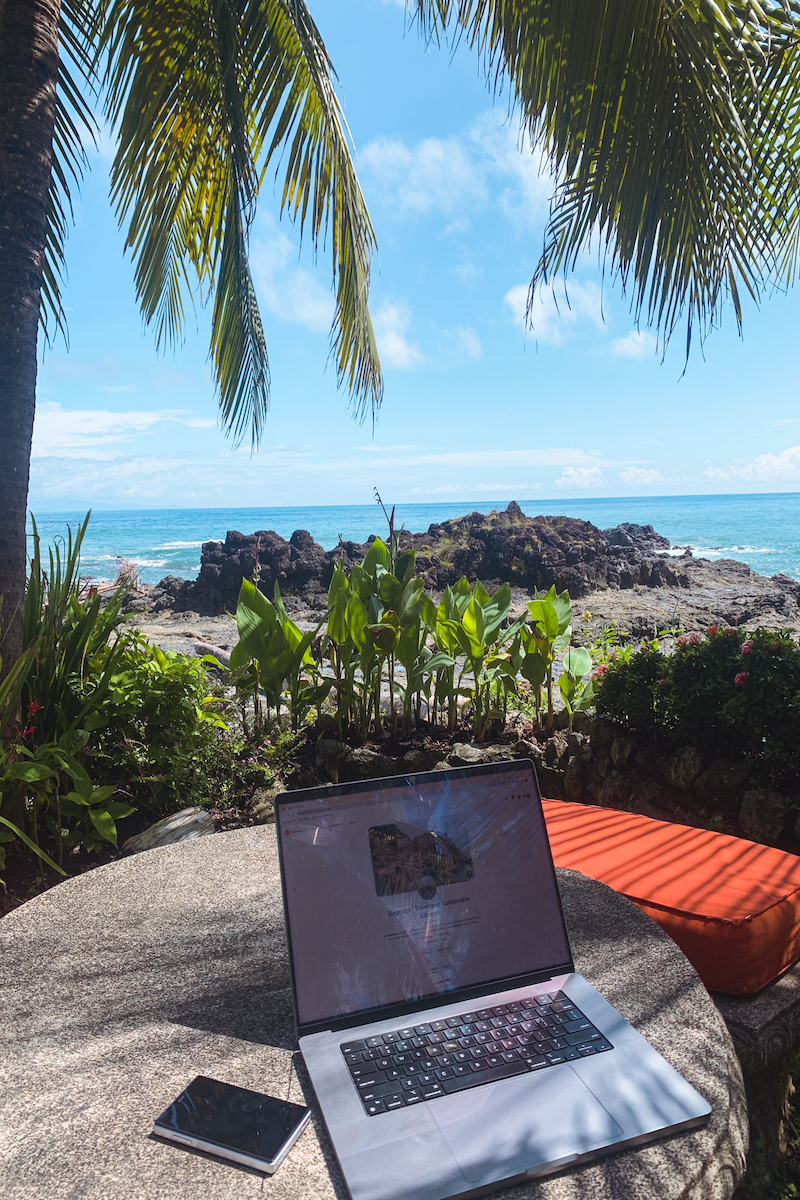
Remote working in Montezuma, Costa Rica
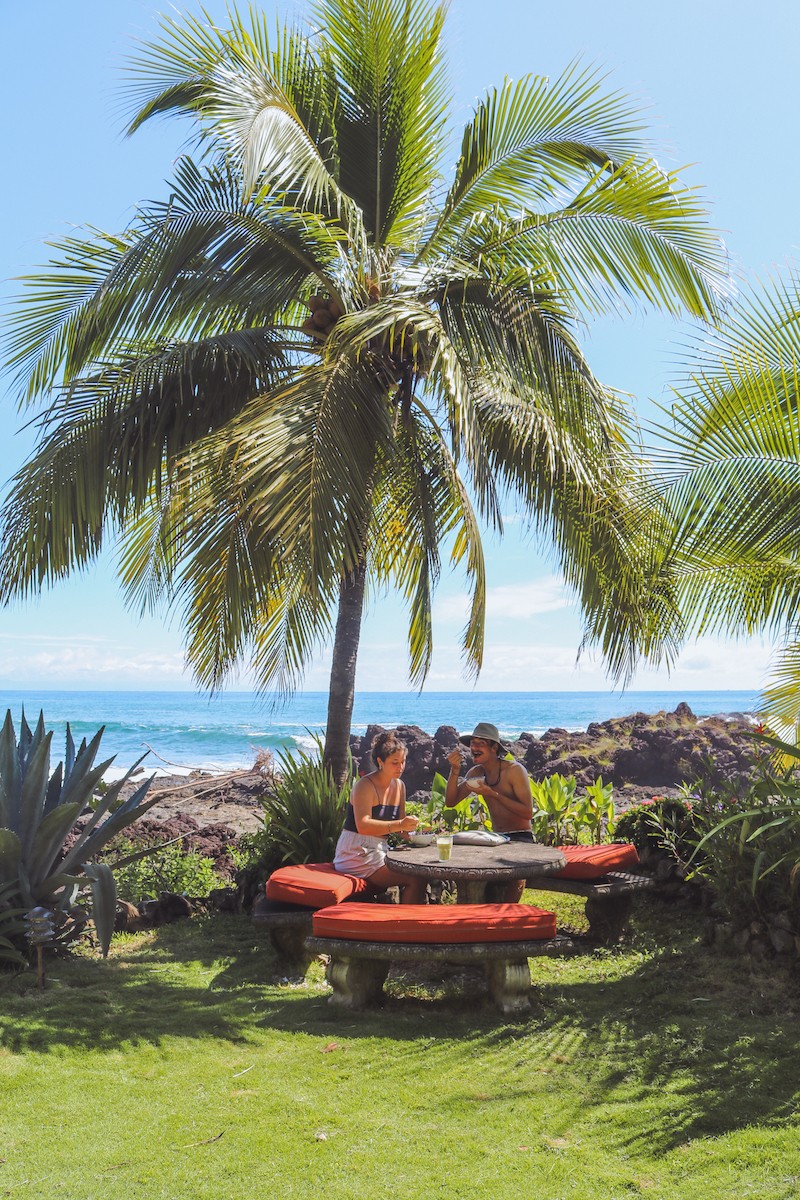
Amor De Mar, Montezuma
6. Consider Time Zones
A common misconception about remote work and travel is that you will have to work undesirable or inconvenient hours while abroad. This does not have to be the case! In fact, you can use time zones to your advantage when you travel so that you wind up working your ideal hours each day.
For example, we recently spent 5 weeks working remotely in Hawaii. Hawaii Standard Time is 5 hours behind Central Standard, so we worked from 6am-2pm each day. As morning people who love to rise with the sun, this was perfect for us. We especially enjoyed being able to go to the beach or hiking each day after work, because we had so much additional time in the afternoons.
If you’re not interested in waking up early or staying up late, you can choose destinations in Central and South America, where there is often no time change or only a 1-2 hours difference for US remote workers. Of course, there are also endless places to travel within the US that won’t drastically affect your timezone either.

Ambergris Caye, Belize
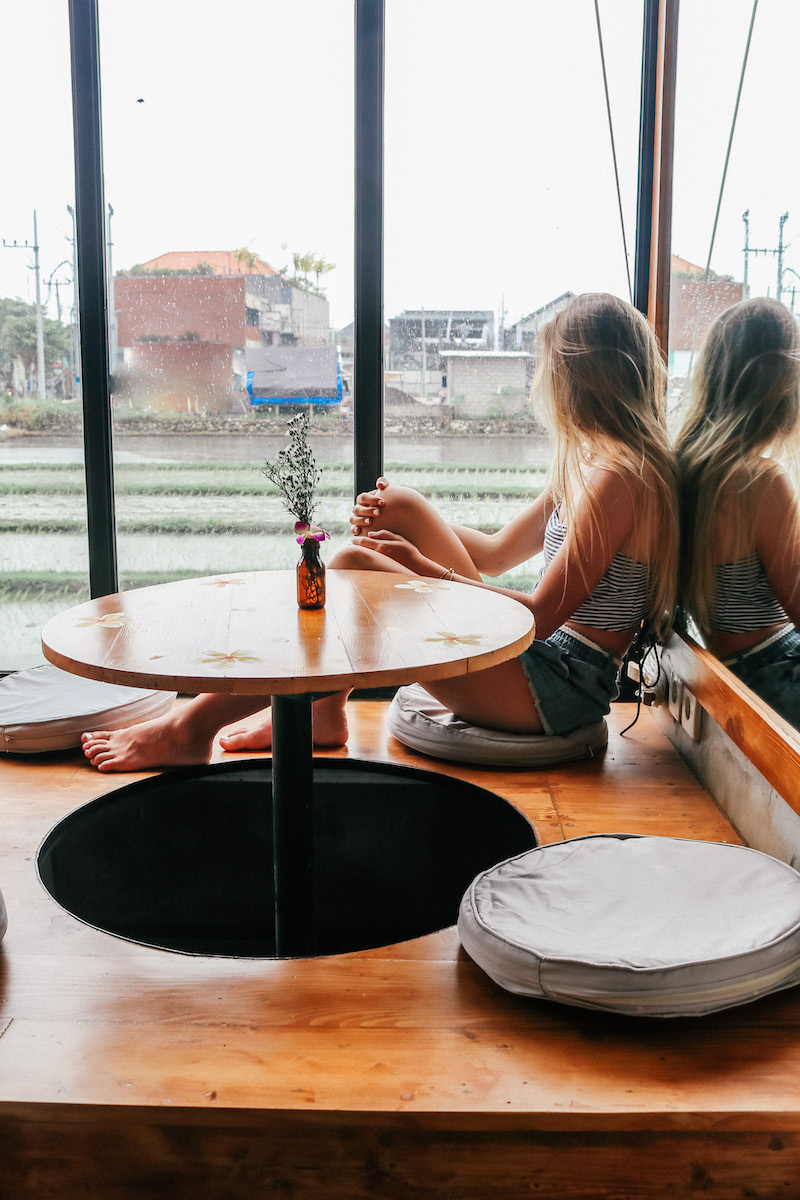
Canggu, Bali
7. Develop an Experiences Over Things Mindset
This is one of our favorite tips when it comes to remote work and travel: prioritize experiences over things. It’s a mindset that’s easy to adopt, and it has the power to change your life in ways material things never could. The experiences you’ve had in your life say a whole lot more about you than your possessions do. Your experiences help you relate to others, learn more about yourself, and market yourself to potential employers.
For more on this mindset: How To Spend Your 20s: Prioritizing Experiences Over Things

Kelingking Beach, Nusa Penida

Nusa Penida, Bali
8. Vet Your VRBOs
If you’ll be staying in an Airbnb or VRBO, you want to vet the property prior to booking to make sure it meets your needs as a remote worker. Start by reading the home’s description to see if the host has included information about WiFi speed. Global Nomad Guide says that a good internet speed is “anywhere between 50 and 100 Mbps.”
Before you book, check the photos and description to see if there is a designated workspace. This way, you don’t wind up having to work from your bed or the couch. Next, read the reviews for specific comments about WiFi and designated work spaces.
If in doubt, always message your host or hotel to ask. Let them know that you plan to work remotely from the property and that you need access to a strong WiFi connection.
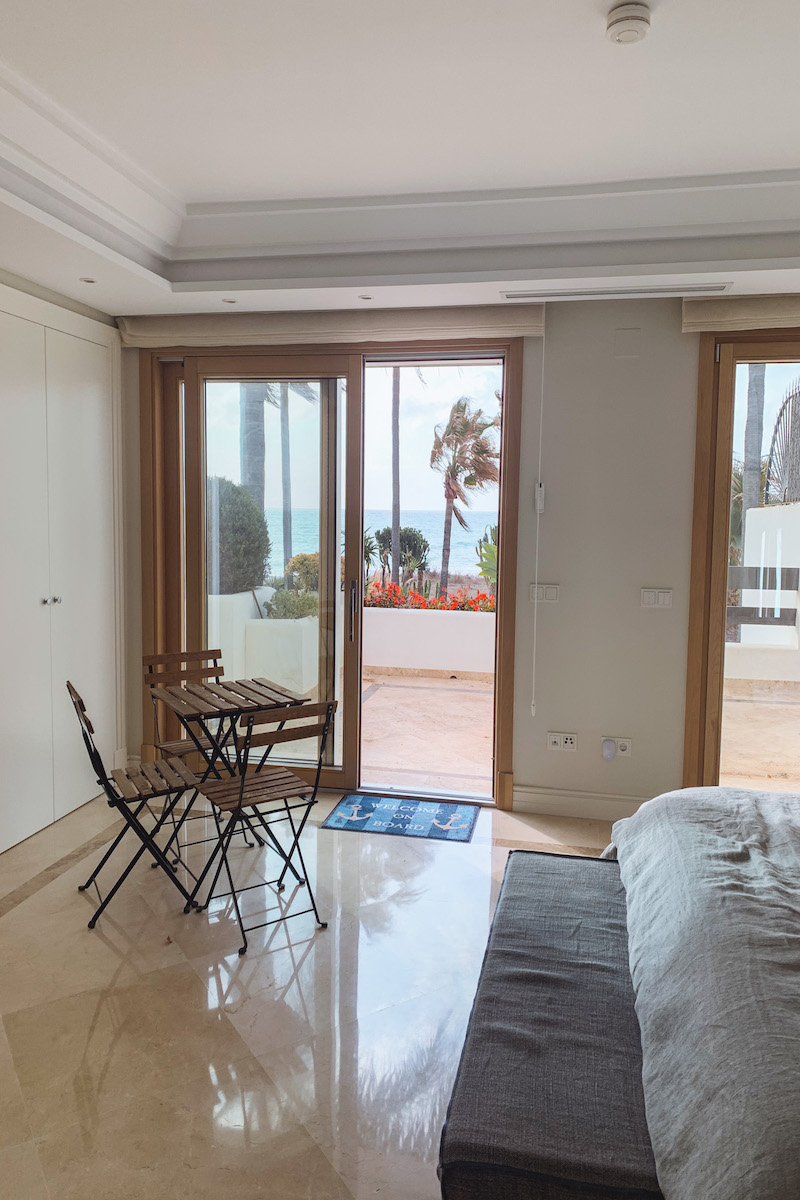
Remote working in Marbella, Spain

Remote working in Marbella, Spain
9. Document Your Travels
This is one of our personal favorite remote work and travel tips! Find some way to document your experiences as a digital nomad. At best, documenting your travels through photography, videography, or writing can turn into a side hustle of its own.
Documenting your travels also helps you develop new skills that make you more marketable to employers. Even an act as simple as starting a journal will allow you to have time with yourself to reflect and grow. Plus, you’ll be able to remember the names of the places you go and people you meet more accurately, so you can share travel tips or memories with friends and family.
At the very least, you will be capturing moments that your future self will be able to look back fondly on.

Martha's Vineyard, USA

Andros, Bahamas
10. Develop a Skill as You Go
One sure way to make yourself more marketable to potential employers as a remote worker is to develop a skill as you go. If you’re able to demonstrate that your travels have enhanced both your personal and professional life, employers will be even more likely to see the value of remote work.
- Attend industry events in places you travel to
- Learn a new language
- Work on some form of content creation (writing, photography, videography)
- Take an online course or certification exam
Alternatively, you can develop a skill that is solely about you. Try learning a musical instrument, taking up running, yoga, meditation, or rock climbing.
What’s something you’ve always wanted to try? Don’t wait. Build time to learn a new skill into your weekly routine. You’ll probably find that giving yourself this time away from work makes you more energized and excited for life in general.
Check out our portfolio to see the skills we’ve been working on while traveling!
Wrap it up: Remote Work and Travel
As you embark on your remote work and travel journey, remember that the possibilities are endless. Just like anything else, the most difficult part is getting started.
With that in mind, our final piece of parting advice is to book that flight and go. You’ll never regret going, but you might regret letting your job hold your back from the lifestyle of your dreams. If you’re anything like us, you’ll wind up falling in love with the world, and changing your life.
All our love,
Baggage girls
1 Comment
Comments are closed.


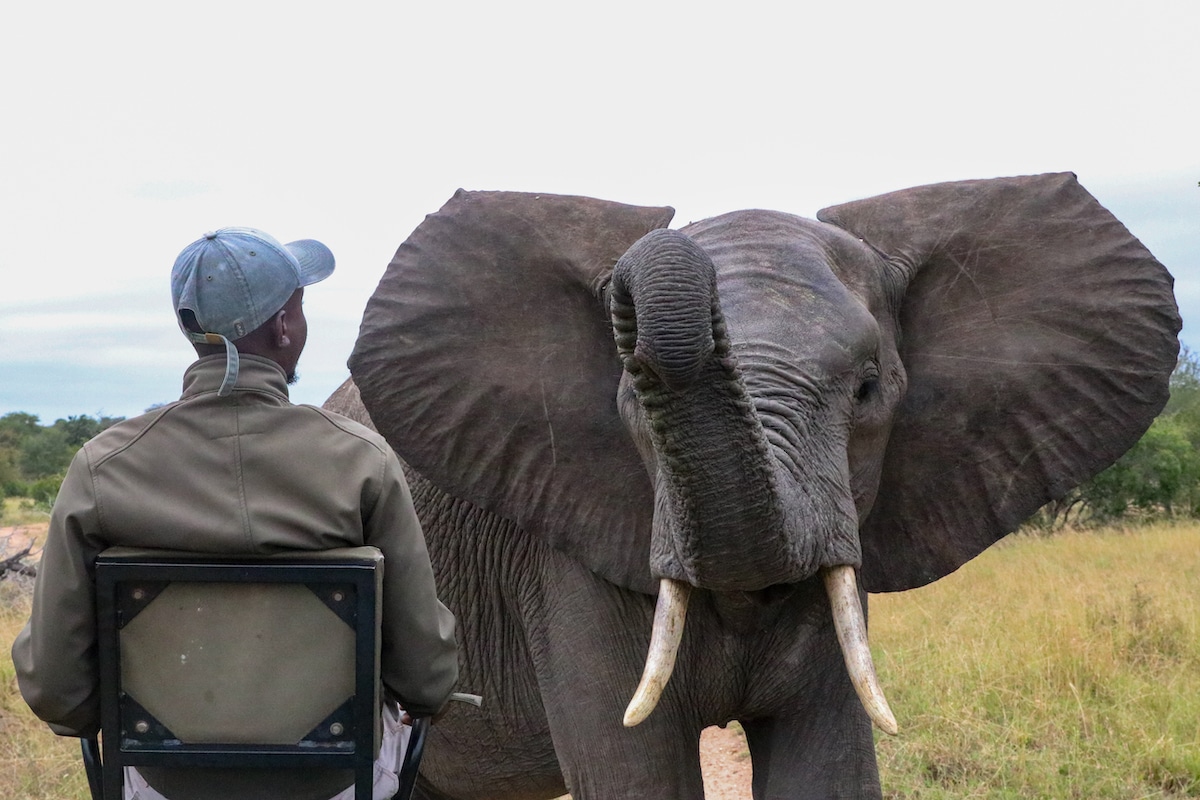

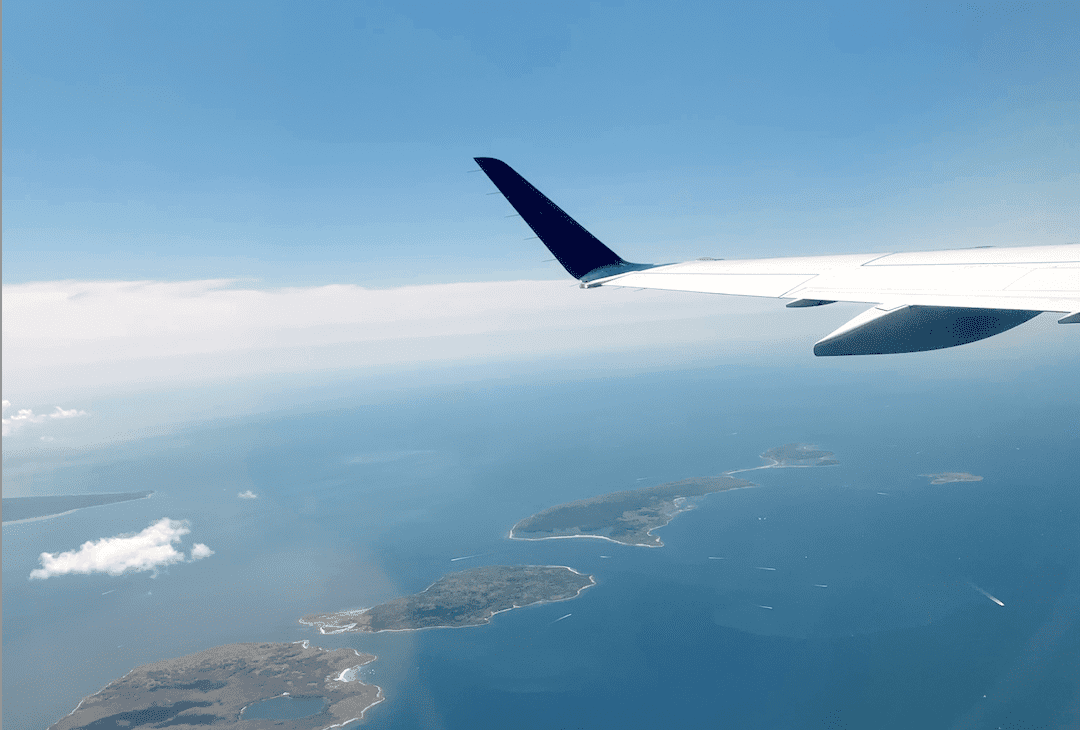

Pingback: The Ultimate Digital Nomad Travel Guide For Oahu, Hawaii